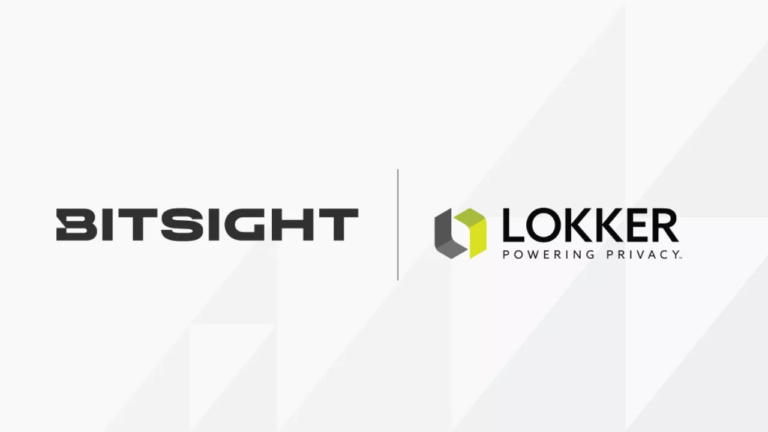With evolving data privacy laws, organizations across all sectors face challenges in maintaining data privacy compliance.
With a patchwork of state and federal laws, rapidly evolving technology, and increasingly complex web ecosystems, companies are struggling to navigate the intricate regulations while maintaining essential marketing and analytics tools.
This article delves into the current state of data privacy compliance, exploring the key challenges, emerging solutions, and best practices for organizations aiming to protect user data while remaining competitive online.
The Third-Party Dilemma
The Ubiquity of Third-Party Software
One of the primary issues stemming from modern web architecture is the widespread use of third-party software.
Websites are built using a variety of external tools and services, including:
- Form software
- Customer Relationship Management (CRM) systems
- Analytics platforms
- Marketing technologies
While these tools are essential for business operations, they introduce significant privacy challenges.
Each third-party vendor may, in turn, use additional vendors (fourth parties, fifth parties, and so on), creating an exponential growth of potential data access points.
The Hidden Web of Data Sharing
Many organizations are unaware of the extent of data sharing occurring on their websites.
A typical web page might have 200-300 different dependencies, each potentially collecting and sharing user data.
This complex ecosystem makes it challenging for companies to maintain control over user information and ensure compliance with privacy regulations.
The Evolving Regulatory Landscape
State-Level Privacy Laws
The lack of comprehensive federal privacy legislation in the United States has led to a patchwork of state laws, each with its own nuances and requirements.
Key state-level privacy regulations include:
- California Consumer Privacy Act (CCPA) and California Privacy Rights Act (CPRA)
- Virginia Consumer Data Protection Act (VCDPA)
- Colorado Privacy Act (CPA)
- Utah Consumer Privacy Act (UCPA)
Sector-Specific Regulations
In addition to state laws, organizations must navigate sector-specific regulations, such as:
- Health Insurance Portability and Accountability Act (HIPAA) for healthcare
- Gramm-Leach-Bliley Act (GLBA) for financial services
- Family Educational Rights and Privacy Act (FERPA) for education
Emerging Legal Challenges
Recent legal developments have further complicated the privacy landscape:
- Wiretapping Lawsuits: Companies face increasing legal risk from lawsuits alleging violations of state wiretapping laws due to the use of certain tracking technologies.
- Video Privacy Protection Act (VPPA): This law, originally designed to protect video rental records, has been applied to modern streaming services and websites that share viewing data with third parties.
- Washington My Health My Data Act: This new law imposes strict requirements on the collection and use of health-related data, extending beyond traditional healthcare providers.
The Limitations of Current Compliance Approaches
Cookie Banners and Consent Management
Many organizations have implemented cookie banners and consent management platforms (CMPs) in an attempt to comply with privacy regulations.
However, recent studies suggest these solutions may be inadequate:
- Approximately 67% of companies now use some form of consent banner
- 98% of these companies drop third-party trackers before the banner even appears
- On average, 37 cookies are typically set before a consent banner is displayed
This widespread practice of setting cookies and trackers before obtaining user consent undermines the effectiveness of these mechanisms and may expose companies to legal risks.
The Challenge of Sensitive Data
The definition of “sensitive data” continues to evolve, making it increasingly difficult for organizations to classify and protect information appropriately.
Healthcare websites, in particular, face significant challenges in balancing the need for analytics and marketing with stringent privacy requirements under laws like HIPAA.
Emerging Technologies and Their Impact
Platform-Led Privacy Initiatives
Major technology platforms are introducing new privacy-focused features and technologies:
- Apple’s App Tracking Transparency (ATT): Requires apps to obtain user permission before tracking their data across apps or websites owned by other companies.
- Google’s Privacy Sandbox: A set of proposals aimed at reducing cross-site and cross-app tracking while still enabling targeted advertising.
While these initiatives represent steps in the right direction, they do not completely solve the underlying privacy issues.
Companies cannot assume all users will be using these technologies or platforms, and the burden of compliance still falls on individual organizations.
The Persistence of Tracking Technologies
Despite increased awareness and regulatory pressure, tracking technologies remain prevalent across the web:
- 12% of scanned sites were found to have a TikTok pixel, including 4.4% of healthcare sites
- 33% of healthcare websites still have the Meta (Facebook) pixel on their site, despite recent lawsuits related to its use
These statistics highlight the ongoing challenge of managing third-party technologies and ensuring compliance with privacy regulations.
Comprehensive Privacy Management Solutions
To address the complex challenges of modern privacy compliance, some companies are turning to more comprehensive privacy management solutions.
These tools aim to:
- Provide visibility into all third-party interactions on a website
- Identify potential privacy risks and compliance issues
- Offer mechanisms to control data sharing and enforce privacy policies
Key features of these solutions include:
- Mapping the entire ecosystem of third-party interactions
- Categorizing risks based on data types and regulatory requirements
- Providing actionable insights for compliance and risk mitigation
- Offering real-time blocking capabilities for unauthorized data collection
Bridging the Gap: Legal, Marketing, and Technical Alignment
A significant challenge in privacy compliance is aligning the understanding and efforts of legal, marketing, and technical teams within organizations.
The complexity of modern web ecosystems often leads to misunderstandings about who is responsible for various aspects of privacy compliance.
Effective privacy management requires:
- Clear communication between departments
- A shared understanding of privacy requirements and technical limitations
- Ongoing education and training for all stakeholders
- A collaborative approach to implementing privacy controls
Best Practices for Privacy Compliance
To navigate the complex landscape of data privacy compliance, organizations should consider the following best practices:
- Conduct regular privacy audits: Regularly assess your web properties, third-party vendors, and data collection practices to identify potential compliance issues.
- Implement data minimization: Collect and retain only the data necessary for your business operations.
- Enhance vendor management: Carefully vet third-party vendors and implement contractual safeguards to ensure they comply with relevant privacy regulations.
- Adopt privacy by design: Integrate privacy considerations into the development process for new products, services, and features.
- Invest in employee training: Educate employees across all departments about privacy regulations and best practices.
- Stay informed: Keep abreast of evolving privacy laws and emerging technologies that may impact your compliance efforts.
- Implement robust consent mechanisms: Ensure that consent banners and opt-in/opt-out mechanisms are properly implemented and respect user choices.
- Consider geoblocking: For organizations unable to comply with certain regional regulations, consider implementing geoblocking to restrict access from those areas.
Wrapping Up
The challenges of data privacy compliance in today’s digital ecosystem are multifaceted and complex. As the regulatory landscape continues to evolve and new technologies emerge, organizations must remain vigilant in their approach to data privacy. By adopting a holistic approach that combines technical solutions with clear communication, ongoing education, and a commitment to privacy principles, companies can better navigate the complex web of privacy regulations while maintaining the trust of their users and customers.
While the task may seem daunting, prioritizing privacy compliance is not just a legal necessity but also a competitive advantage in an increasingly privacy-conscious marketplace. As we move forward, the organizations that successfully balance innovation with robust privacy protections will be best positioned to thrive in the digital economy.







